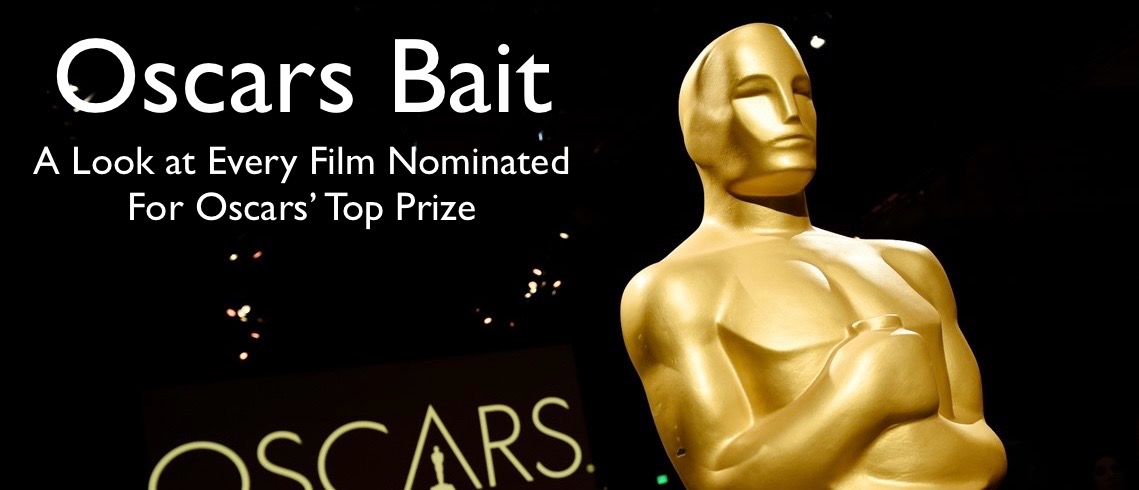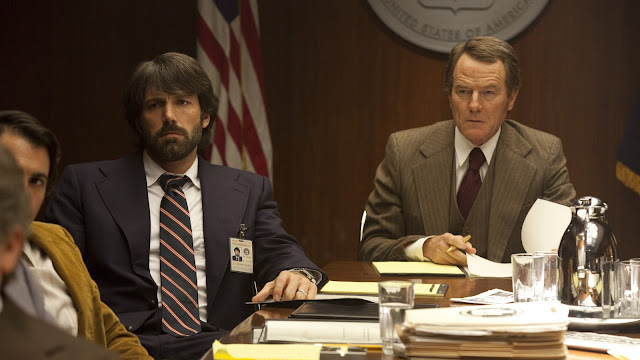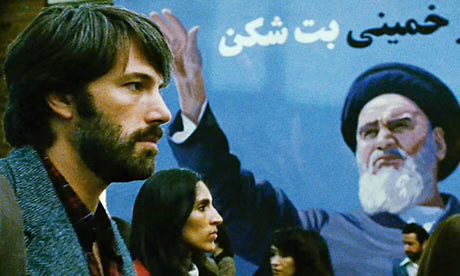I have only vague memories of 1980, thanks in large part to being only three years old at the time. My earliest confirmed memory is celebrating my fourth birthday in the summer of that year, excited to be allowed to order whatever I wanted off the Taco John’s menu where my party was being held. I was far too young to have any idea what was going on in world politics, nor would I have understood it had I been aware of it. As I grew older and started taking history classes in school I was never taught, to my knowledge, anything in history that was more recent than the civil rights movement, and even that was barely touched, like an embarrassment being swept under the rug. Consequentially, I never learned about the uprising in Iran that occurred in late 1979 nor the hostage situation that followed. In fact, thanks to so much of this story being classified until only recently, most people knew little to nothing about this story. That changed when then President Bill Clinton declassified the mission, and we began to learn what happened in 1979/80 and how the CIA helped rescue six Americans facing imprisonment and execution in Iran.
Argo, the film, released in 2012, but its genesis actually begins in 2007 when an article was published in Wired entitled: How the CIA Used a Fake Sci-Fi Flick to Rescue Americans from Tehran. Joshuah Bearman wrote the article based on the “Canadian Caper,” and for most people, this was their introduction to a crazy moment in USA history, something that felt like a bad Hollywood B-Picture but was actually real. Screenwriter Chris Terrio wrote up a screenplay based on this article, and Ben Affleck, who was looking for a vehicle to catapult him out of film jail after a slew of underperforming pictures, directed and starred in it, despite being a different race than the character that he was portraying.
The film ran into controversy when it was first screened, specifically for egregiously downplaying Britain, New Zealand, and especially Canada’s involvement in getting the Americans to safety. Watching this film without any real-life context, it would appear that the vast majority of the work rescuing these six people was done by the CIA. That is simply not the case. Even former President Jimmy Carter called the film out for this, wishing to promote our neighbor from the north for their efforts in this mission. For his part, Ben Affleck insisted the alterations to history were done simply from a dramatic standpoint but did alter the pre-end credits text to further emphasize Canada’s involvement. Still, some felt it was not enough and thought the film did little to promote the global effort made in this situation.
On top of that, little to no effort was made to explain the situation in Iran in the first place. Iranian people were dismayed in 2012 that the political motivations, and even the significance of the date the uprising happened on, were not adequately addressed in the film, leaving the general population of Iran reduced to cultural stereotypes. That sentiment, though, has not kept this film from gaining a cult following in that country, making it one of the most bootlegged films found in Iran.
The film follows Tony Mendez (Ben Affleck), a CIA operative tasked with finding a way to rescue six American civilians who are endangered when Iranian Islamists storm the United States Embassy in Tehran in retaliation for President Jimmy Carter granting asylum in the U.S. to Shah Mohammad Reza Pahlavi following the overthrowing of his monarchy during the Iranian Revolution. Sixty-six embassy staff members are taken hostage, but six avoid capture thanks to the efforts of Canadian Ambassador Ken Taylor (Victor Garber).
Presented with bad idea after bad idea, Tony, inspired by watching Battle for the Planet of the Apes with his son, comes up with a cover story that can be used for getting the six staff members out of Iran undetected: create a fake movie that is looking for alien landscapes to film in Iran, and have the six staff members pretend to be part of the film crew, ready to board a plane back home. The idea is bad, but it is the best one they have, and Tony gets the go-ahead to make it happen.
In order to make this plan work, Tony needs a fake movie that will be believable. He contacts make-up artist John Chambers (John Goodman), who has worked for the CIA before. John connects him with Film Producer Lester Siegel (Alan Arkin). The three come up with a sci-fi adventure film, Argo, and put advertisements in magazines, create posters, draw up storyboards, and a full script, all to support the idea of a legitimate movie in case Iranian forces dig into the cover too deeply. They also create detailed back-stories for all six of the embassy employees, assigning them realistic production roles for a movie location scouting trip, something easy to memorize with space for each member to fill in the blanks with their own back-stories should they get interrogated. With all that established, Tony travels to Iran to meet up with the group and explain just how this plan will work and how they are going to ensure a safe trip back home.
Setting aside any biases based on the historical inaccuracies, this film is actually a well-crafted motion picture. Ben Affleck can be a bit of an acquired taste, but he has talent, especially behind the camera. He made a name for himself as half of the duo that wrote Good Will Hunting, winning an Oscar for that screenplay. While he isn’t credited on the screenplay for Argo, his understanding of the process and his keen eye for details helped him craft a film that is taught, well-paced, and has a look to it that is unique. Argo is a beautiful-looking film from a cinematic point of view. The heavy use of legitimate news coverage at the time aids in selling the time period this film portrays, too.
As good a job as Affleck is doing behind the camera, he is less effective in front of it. His portrayal of Tony Mendez is stiff, far too reserved to keep us engaged in his personal story. This can sometimes happen when an actor is directing himself, and it is on full display here. This is further exacerbated later in the film when he has to act opposite the six, all of whom have limited time to establish their characters. These six actors do the best with their limited screen time and are mostly successful in selling not only their individual personalities but their fears and frustrations with this plan of escape. Compared to them, Affleck’s low-key performance comes off far too dry.
He’s also being overshadowed by both Goodman and Arkin, who are reveling in their over-the-top roles as Hollywood “Big Shots.” These two are obviously having more fun acting in this than Affleck, and it makes their scenes just a little too tilted in their direction. The only other supporting performer with meaningful screen time is CIA Deputy Director Jack O’Donnell (Bryan Cranston), who goes back and forth between being an ally and an obstacle for Mendez. His character seems to exist primarily to add one more level of danger to the already dangerous plan, ordering Mendez at the last minute to cancel the plan and wait for a military extraction. Naturally, Mendez refuses and has to head to the airport, the six in tow, not knowing if their plane tickets will be there waiting for them. None of this happened in real life, of course, and neither did any of the near misses that populate the last act of this film. The reality was far more straightforward and would have made for a less interesting picture.
This is a taught thriller that suffers from some major omissions in the true facts of the story. Affleck’s claim that this is “based on true events” and not “a true story,” tries to minimize the one-sidedness of this narration and does the true heroism of Ken Taylor and the Canadians a great disservice. It’s unfortunate that a narrative that better represented the facts couldn’t have been produced. For what we got, though, this film is entertaining and gives a basic overview of this crazy idea that managed to get six Americans out of a country that was determined to take them hostage, maybe even kill them. On that level, it succeeds. Should it have won Best Picture for 2012? Maybe. Maybe not. It certainly was predicted to do so by critics at the time, and it didn’t really have any serious opposition from the other films nominated that year.
Academy Award Nominations:
Best Picture: Ben Affleck, Grant Heslov, and George Clooney (won)
Best Supporting Actor: Alan Arkin
Best Adapted Screenplay: Chris Terrio (won)
Best Film Editing: William Goldenberg (won)
Best Original Score: Alexandre Desplat
Best Sound Editing: Erik Aadahl and Ethan Van der Ryn
Best Sound Mixing: John Reitz, Gregg Rudloff, and José Antonio García
____________________________________________________
Release Date: October 12, 2012
Running Time: 120 Minutes
Rated R
Starring: Ben Affleck, Bryan Cranston, Alan Arkin, and John Goodman
Directed By: Ben Affleck








Comments
Post a Comment